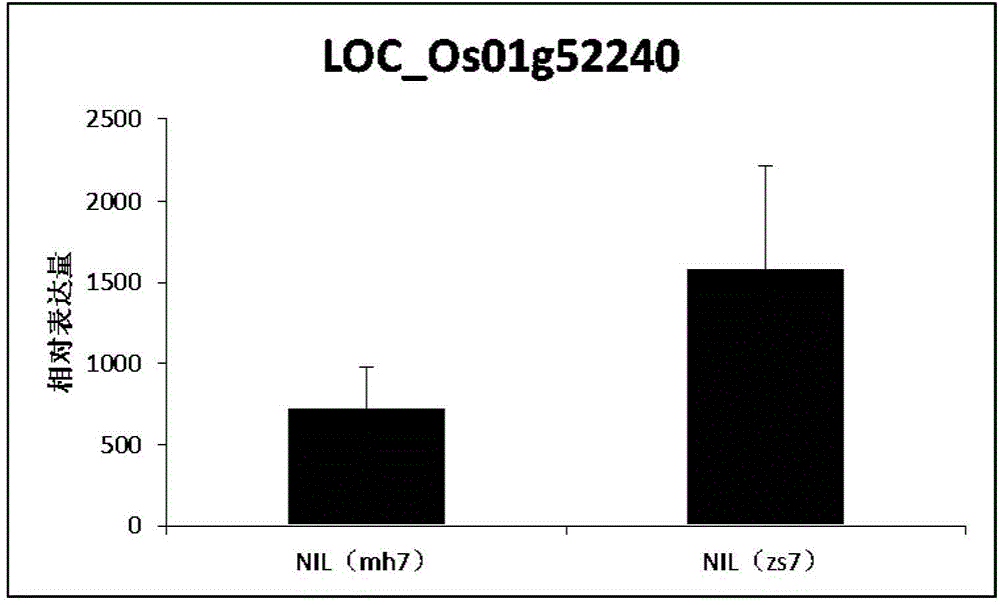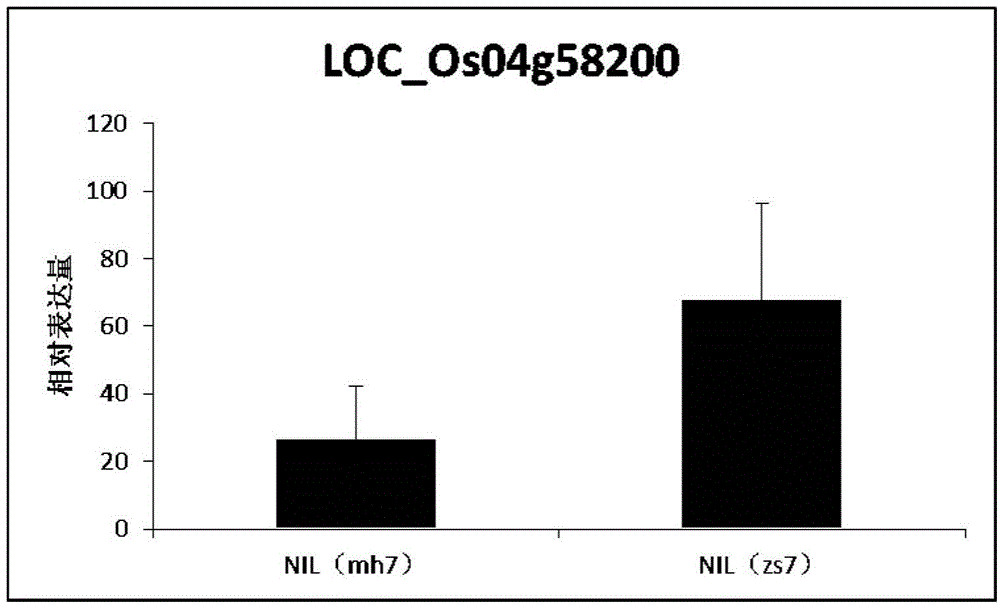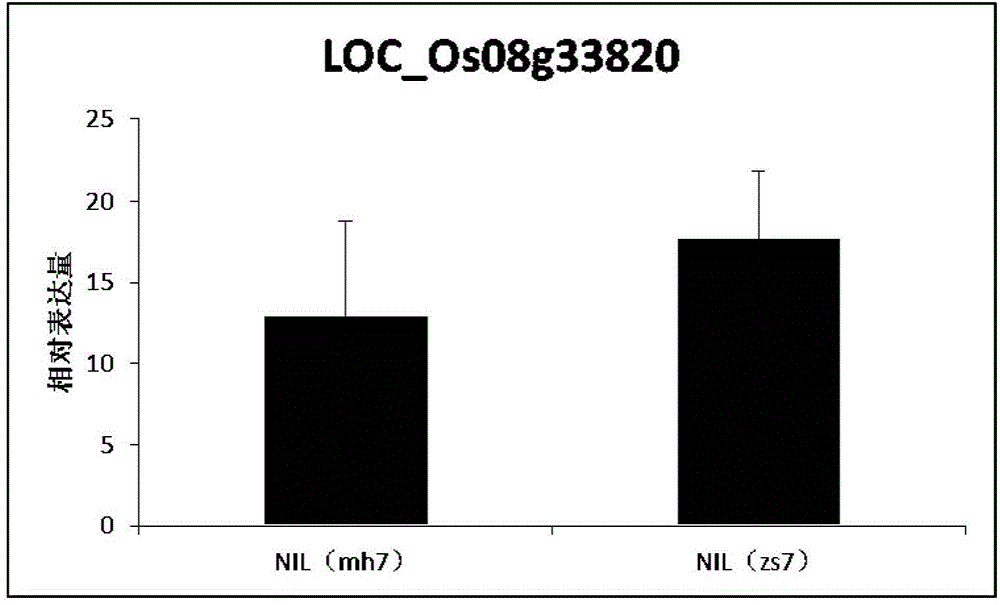Application of Ghd7 gene in regulating rice flag leaf chlorophyll content
A technology of chlorophyll content and rice flag leaf, applied in the fields of application, genetic engineering, plant gene improvement, etc., can solve the problem of unreported control of natural genetic variation of chlorophyll, and achieve the effect of reducing chlorophyll content
- Summary
- Abstract
- Description
- Claims
- Application Information
AI Technical Summary
Problems solved by technology
Method used
Image
Examples
Embodiment 1
[0030] Example 1: Genome-wide association analysis detected extremely significant effect sites controlling chlorophyll content in the Ghd7 gene segment
[0031] Taking 533 sequenced core germplasms from the State Key Laboratory of Crop Genetic Improvement of Huazhong Agricultural University as an associated group, a systematic survey was conducted on the chlorophyll content of flag leaves in 2012 and 2013, using linear mixed models (LMM) and multi-locus mixed models ( MLMM) genome-wide association analysis (GWAS) of chlorophyll content-related traits in the entire associated population and each subgroup found that there was a significant hotspot area in the 9.13-9.17Mb interval of chromosome 7, and 9 genes from different GWAS could be repeatedly detected. The extremely prominent signal peak analyzed corresponds to the position of the Ghd7 gene.
[0032] The inspection method of the chlorophyll content of the core germplasm: about 3 days after the earing of the rice, take the h...
Embodiment 2
[0034] Example 2: Relationship between Ghd7 expression level and chlorophyll content in core germplasm materials
[0035] 101 materials were randomly selected from the core germplasm association population, and the relationship between gene expression and chlorophyll content was detected. It was found that the expression of Ghd7 was extremely significantly negatively correlated with 12chla, 12chlb and 12total_chl (Table 2).
[0036] Table 2 The relationship between the expression level of Ghd7 and the traits related to chlorophyll content
[0037]
Embodiment 3
[0038] Example 3: The use of near-isogenic lines and transgenic materials to confirm the regulatory effect of Ghd7 on the content of chlorophyll in flag leaves
[0039] The materials NIL (mh7) and NIL (zs7) used in the present invention are a pair of near isogenic lines with Zhenshan 97 as the genetic background constructed by the State Key Laboratory of Crop Genetic Improvement of Huazhong Agricultural University (the original near isogenic line Named as the inbred line RIL50, see: the second line in the paragraph "Specific Embodiments" on page 3 of the patent specification of Publication No. CN101148674, the original source of this material can be found in: Xing Yongzhong et al., Mapping and Separation of Rice Plant Height and Heading Date Genes , Acta Botanica, 2001, 43(7):721-726 Weiya), using the near-isogenic line, Dr. Xue Weiya carried out map-based cloning of the Ghd7 gene (Weiya Xue., et al.Natural variation in Ghd7 is an important regulator ofheading date and yield p...
PUM
 Login to View More
Login to View More Abstract
Description
Claims
Application Information
 Login to View More
Login to View More - R&D
- Intellectual Property
- Life Sciences
- Materials
- Tech Scout
- Unparalleled Data Quality
- Higher Quality Content
- 60% Fewer Hallucinations
Browse by: Latest US Patents, China's latest patents, Technical Efficacy Thesaurus, Application Domain, Technology Topic, Popular Technical Reports.
© 2025 PatSnap. All rights reserved.Legal|Privacy policy|Modern Slavery Act Transparency Statement|Sitemap|About US| Contact US: help@patsnap.com



